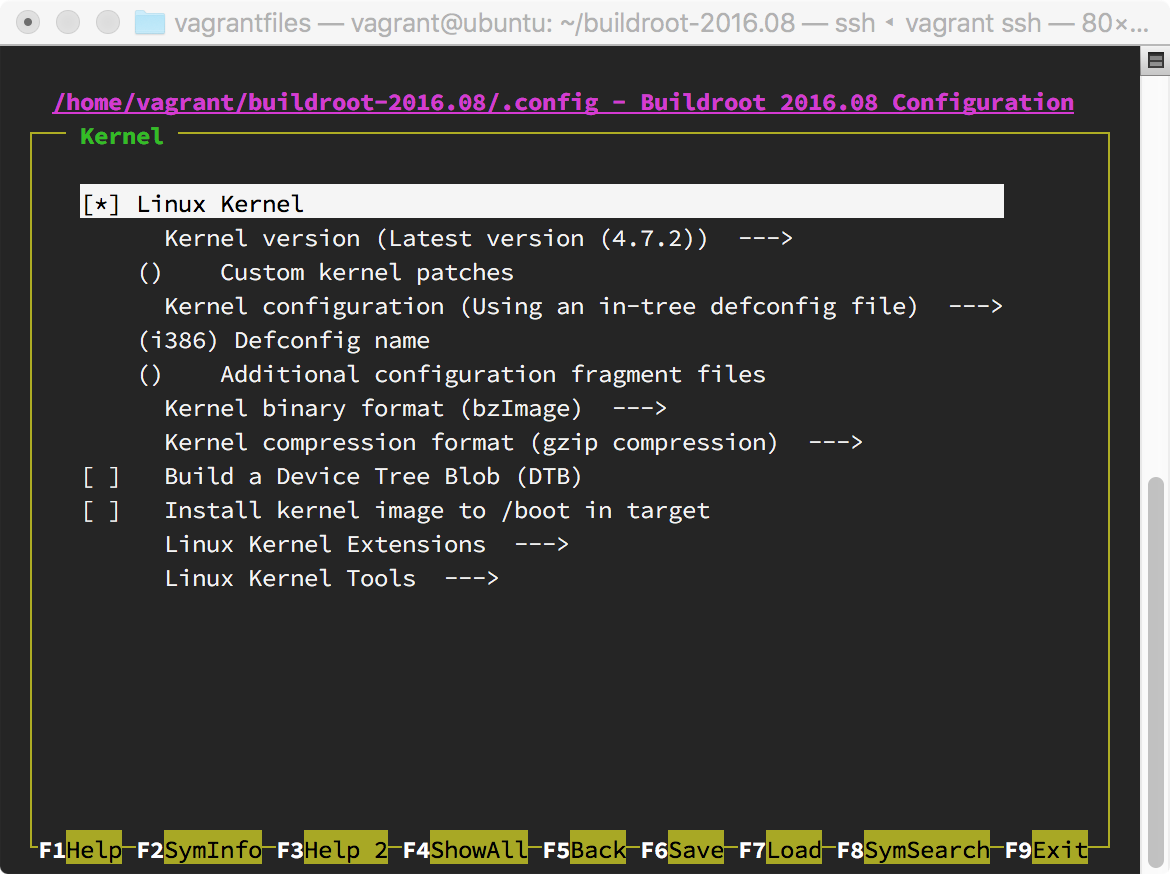Introduction¶
SSH is a very common tool. It is used on nearly every Linux computer. Therefore, we add SSH as a default tool in the Buildroot to speed up your developing. Once the computer connecting to a network, you can use this convenient tool.
The default username of Firefly-PX3-SE is root and the password is 123
Download artifacts. Previous Artifacts. Clone with HTTPS. Copy HTTPS clone URL. Copy SSH clone URL git@gitlab.com:buildroot.org/buildroot.git. Copy HTTPS clone URL https://gitlab.com/buildroot.org/buildroot.git. 8- to connect through ssh, creat a new user on the target $ adduser -h / -s /bin/sh 9- from the host run the following command in a new terminal $ ssh -p 2222 @localhost. ALT Linux Team - Sisyphus packages info. Buildroot is a tool that simplifies and automates the process ofbuilding a complete Linux system for an embedded system, usingcross-compilation. In order to achieve this, Buildroot is able to generate across-compilation toolchain, a root filesystem, a Linux kernel imageand a bootloader for your target. Buildroot is a simple, efficient and easy-to-use tool to generate embedded Linux systems through cross-compilation. Can handle everything Cross-compilation toolchain, root filesystem generation, kernel image compilation and bootloader compilation.
Prepare for connection¶
Please refer to WIFI & Ethernet for details to configure the network and make sure it can ping the host successfully.
SSH login¶
For SSH login, you can just use the following command.
Enter into the password and if everything is ok, you can login to Firefly-PX3-SE and start your work.
168.168.100.75 is the IP address of the device.。
Of cause, you can also use other command such as scp.The use of SSH is the same as that on the Linux operating system.
How to configure SSH via Buildroot¶
SSH feature is optional in Buildroot. By default, the current firmware supports SSH feature.
In Buildroot, you can use
makemenuconfigto add anOPENSSHpackage.
You can also modify the configuration file defconfig:configs/rockchip_px3se_defconfig as below
Configure the username and password for login. Buildroot build the root filesystem based on root privilege. You can login to the system via root directly by modify the configuration file
defconfig:configs/rockchip_px3se_defconfig.
Next, you can refer to Build root filesystem to build the SDK and then the generated firmware will support SSH feature automatically.
Lately I was reading about embedded linux and came to know about two such custom embedded linux system build sytem the Yocto project and Buildroot.I wanted to make my own custom linux for raspberyy pi zero W i had in my *ahem* attic.
Requirements:
- Raspberry pi zero w (ofcourse)
- A PC (with ubuntu 18.04 or higher)
- microSD card
- microSD card reader
Step 1: Preparing and downloading BUILDROOT
Open Ubuntu terminal (Ctrl+ALT+T) and type the below
Building
Buildroot is now ready for initial configuration. There are few commands that can help:
output:
REAL FUN STARTS!
Type inside terminal
If there was no errors then continue editing the image to add wifi, bash , ssh, and whatever you need for your project.
A small GUI pops up (should be in maximized terminal window), go through each sections . Use Y key to enable N to remove , press escape twice to go back or use exit option near the select option .
- Target options –> leave it default
- Build options –> select enable compiler cache
- Toolchain –> Enable wchar support
- System config -> change system hostname, system banner, root password , enable install timezone info
- Hardware Handling
6. Network applications
7. Target Packages -> Shell and utilities
Also under System configuration -> under root password change shell to bash, also run getty login prompt after boot.
Finally
type the below code (fingers crossed!)
once you get no error in output , output image files will be under
sdcardimage.img will be your image to burn to sdcard for Raspberry pi zero w.
Enabling Wi-Fi
In this subsection, we enable the Wi-Fi interface of the Raspberry Pi Zero W, so it will be able connect to any Wi-Fi networks.
wpa_supplicant
Create a file, named interfaces in buildroot/board/raspberrypi/ (all the other raspberrypi* are symlinks to this folder). The auto wlan0 will make sure that wlan0 is started when ifup -a is run, wich is done by the init scripts.
Create another file, named wpa_supplicant.conf with wpa_passphrase in buildroot/board/raspberrypi/ (all the other raspberrypi* are symlinks to this folder). It should look like something like this:

ALSO
post-build.sh
The hotplug helper must be set as mdev and write /etc/mdev.conf file. The mdev package itself has some helper script for this and can be used directly. Also the above created files must be copied, so add the following lines to buildroot/board/raspberrypi/post-build.sh:
Buildroot Ssh Keys
sshd config file
Buildroot Ssh Download
open/mount your sdimage.img file previously generated and copy /etc/ssh/sshd_config to buildroot/board/raspberrypi/ and add
One last ride
finally do
you should have a fully working raspberry pi zero w linux custom image with ssh and wifi also you can add anything to this base build like wiringpi, gpio library, python etc even qt and xorg , keyboard support , mouse etc can be added.
Buildroot Ssh Connection Refused
CREDITS:
